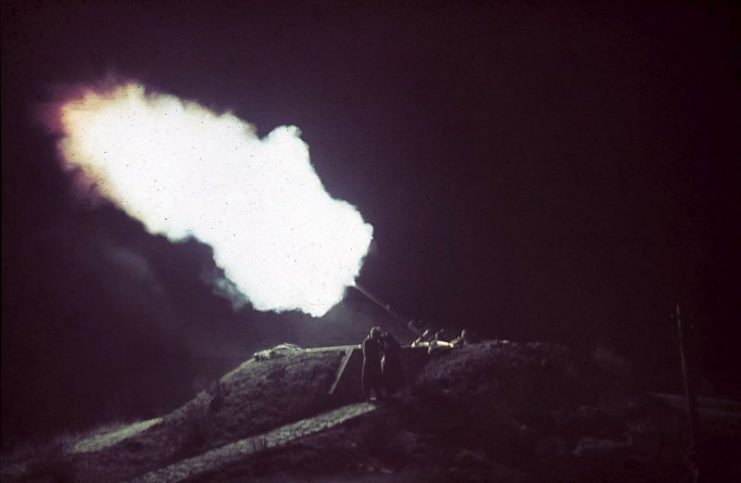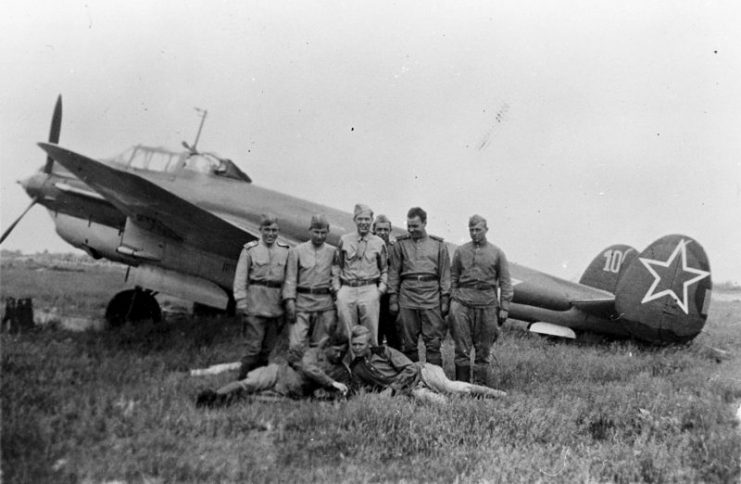Finland, along with Poland, was entangled in WWII from the very beginning. In November 1939, the USSR invaded the Scandinavian country and, in 1940, despite significant resistance by the Finns, the Moscow Peace Treaty was signed. The treaty gave the Soviets the right to cede parts of Finnish territory that bordered with the USSR.
When Nazi Germany invaded the Soviet Union the following year, Finland seized the opportunity to regain its lost territories. Their war against the Soviets which ran parallel with WWII is commonly referred to as the Continuation War. Finland managed to keep a specific status within the Axis armada throughout the conflict.
As the Eastern Front was about to collapse in 1944, and Germany’s retreat was imminent, the Finns became more and more concerned about the future of their state. The army managed to contain the Soviet offensive of 1944, but it was envisaged that another such push would be impossible to endure.
To force Finland to capitulate, the Soviet Air Force began a bombing campaign. This decision dated from the 1943 Tehran Conference, when Stalin proposed such measures as a resort to force Finland to cut its ties with Germany and settle for a separate peace agreement.
On February 6, Soviet bombers were given the green light to start bombing the capital, Helsinki, and a series of night raids followed.
What the Soviets had not predicted was a cunning defense plan devised by the Finnish Army Staff. With the use of decoy tactics, the Finns kept their capital almost intact from the terrible bombing in which 2,121 bombers dropped more than 16,000 bombs.

The specific geography of the city enabled the plan to work perfectly. Helsinki – the city dubbed the Daughter of the Baltic – lies surrounded by numerous little islands that are mostly uninhabited. So, the government decided to lure the bombers into dropping their devastating load on the uninhabited islands instead of the city itself.
How did they manage to do that? Well, first of all, visibility was very poor, because the sorties flew at night. The second and most important reason was the fires that were lit on the islands to draw the attention from Helsinki.
Searchlights were used only on the eastern outskirts of the city to make the scenery look more convincing. They gave the impression that they were, in fact, the main defense ring confronting the bombers.
The population received strict orders to maintain a complete blackout during raids. The fires lit on the surrounding islands were arranged to resemble street lights, convincing the bomber pilots to divert their mission east of the actual city.
Although the preparations were conducted accordingly, on the night of the first raid, February 6-7, around 350 bombs fell on Helsinki, leaving a trail of destruction. On the other hand, more than 2,500 bombs exploded on the uninhabited islands.
Nevertheless, the death toll was around 100, with 300 wounded. More than 160 buildings were damaged during the initial raid which came in two waves. One of the reasons for the high death rate and the partial ineffectiveness of the defense plan was that the Finnish AA service had issued several false alarms during the previous day. Some citizens then failed to react appropriately when the real threat arrived.

During the second raid, on the night of February 16-17, the Soviet Air Force met with a stronger resistance. A squadron of 12 German Messerschmitt Bf 109G-6 fighters with special night fighting equipment was flown from the Estonian front to confront the arriving bombers.
Fighter planes lit the sky, downing several heavy bombers. By that time, the people of Helsinki had already evacuated the city voluntarily, leaving it in complete darkness. Those who decided to remain in their homes followed the protocol and dimed their lights at the first call of the sirens.
The casualty rate dropped significantly, and so did the number of bombs that fell in the vicinity of the city. Less than 100 bombs landed within Helsinki. Another 4,217 ended up either in the sea or the false town constructed of torches and bonfires.
On the evening of February 26, the last raid on Helsinki took place. At first, a reconnaissance aircraft was spotted in the sky above the city – a clear sign that an air raid was to follow. Finnish intelligence intercepted a radio transmission which confirmed that a fleet of 896 bombers was on their way.
The Soviet aircraft encountered a well-coordinated air defense combined with a competent fighter plane force which downed nine bombers.
Following the raids, the Finnish Air Force decided to respond with force. On March 9, 1944, a group of Finnish bombers infiltrated a retreating formation of Soviet bombers, tailing them to their airfield near Leningrad. As the Soviet planes landed, the Finnish bombers – which included Junkers Ju 88s, Bristol Blenheims, and Dornier Do 17s – dropped their loads and destroyed a significant number of Soviet aircraft.
Several other infiltrations were organized between March and May 1944, causing panic among the Soviet pilots and often enabling the Finns to escape successfully in the ensuing confusion. The peace treaty was signed on September 19, officially ending the hostilities in Finland.
As for Helsinki, a funny anecdote accompanies the tale of how the city escaped destruction during WWII. Just after the war, Allied Control Commission made an official visit to the capital of Finland, led by the Soviet General Andrei Zhdanov. Reportedly, the General was confused and bedazzled by the state of the city. He could not believe his eyes when he saw before him the Daughter of the Baltic, in all its glory and without a single scar.
 Jecinci."
title="The bombing of Helsinki, November 30, 1939. The main building of Helsinki University, on Senate Square, burns during the night. Photo: B&W SA-Kuva, colorized by
Jecinci."
title="The bombing of Helsinki, November 30, 1939. The main building of Helsinki University, on Senate Square, burns during the night. Photo: B&W SA-Kuva, colorized by